Can a mask protect you from digital overexposure?
David Oliver thinks so. Under the masked identity of Grip Face, the multidisciplinary artist builds sculptures, paintings, and installations that explore digital anxiety through soft pink fur, mirrored surfaces, and creatures caught between analog warmth and digital gloss.
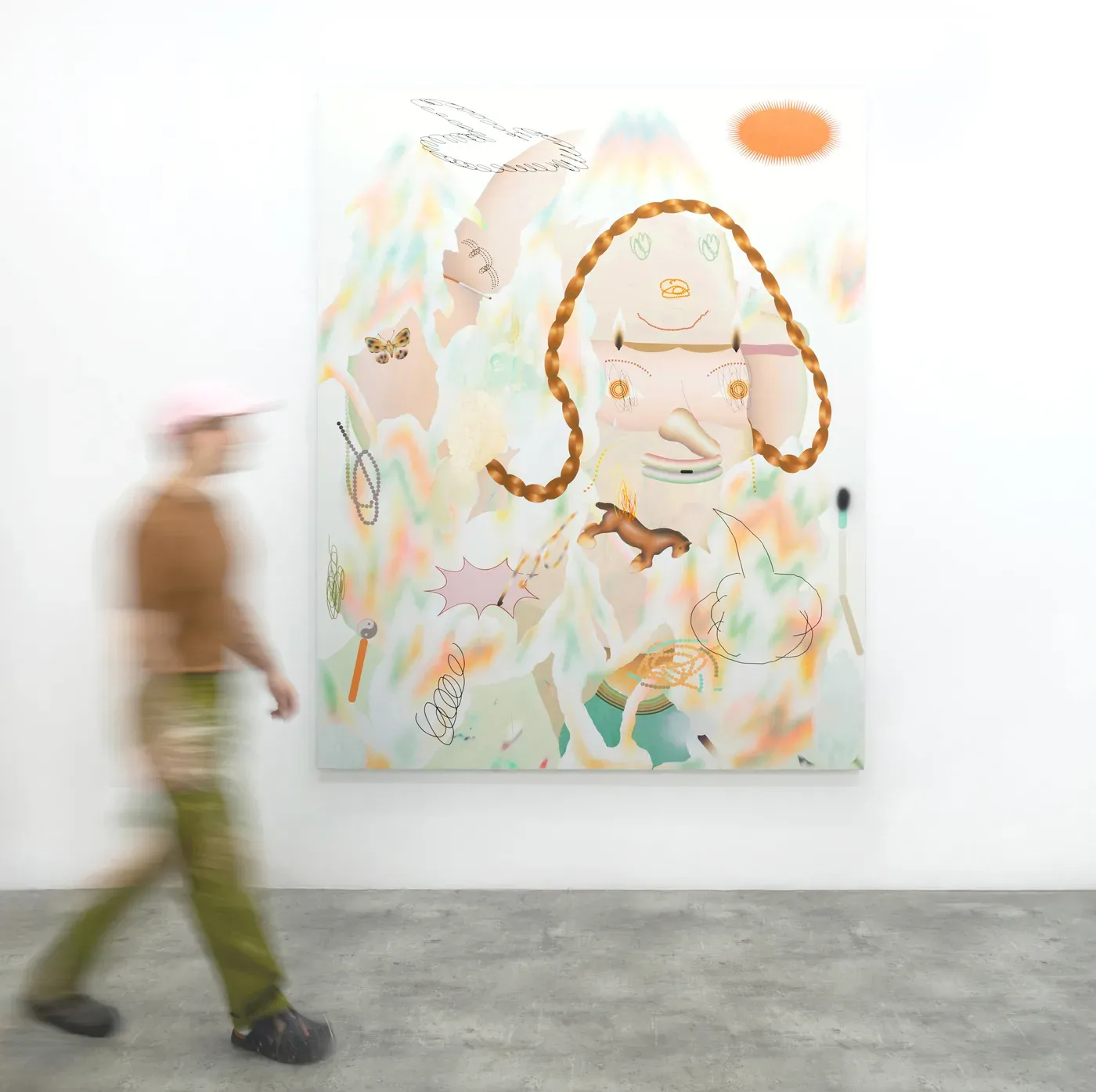
But here's the tension: creating a public persona to escape visibility means building another identity that demands its own performance.
The mask becomes both refuge and trap.
Grip Face hasn't escaped the exposure machine. He's built a more elaborate costume to wear inside it.

The Architecture of Hiding
Grip Face emerged as a systematic response to what Grip Face calls the collapse of private space in digital culture. The mask isn't decorative. It's structural.
By channeling his practice through this alter ego, Grip Face creates a controlled interface between his work and a world that demands constant self-disclosure. The persona circulates publicly while something essential stays protected underneath.
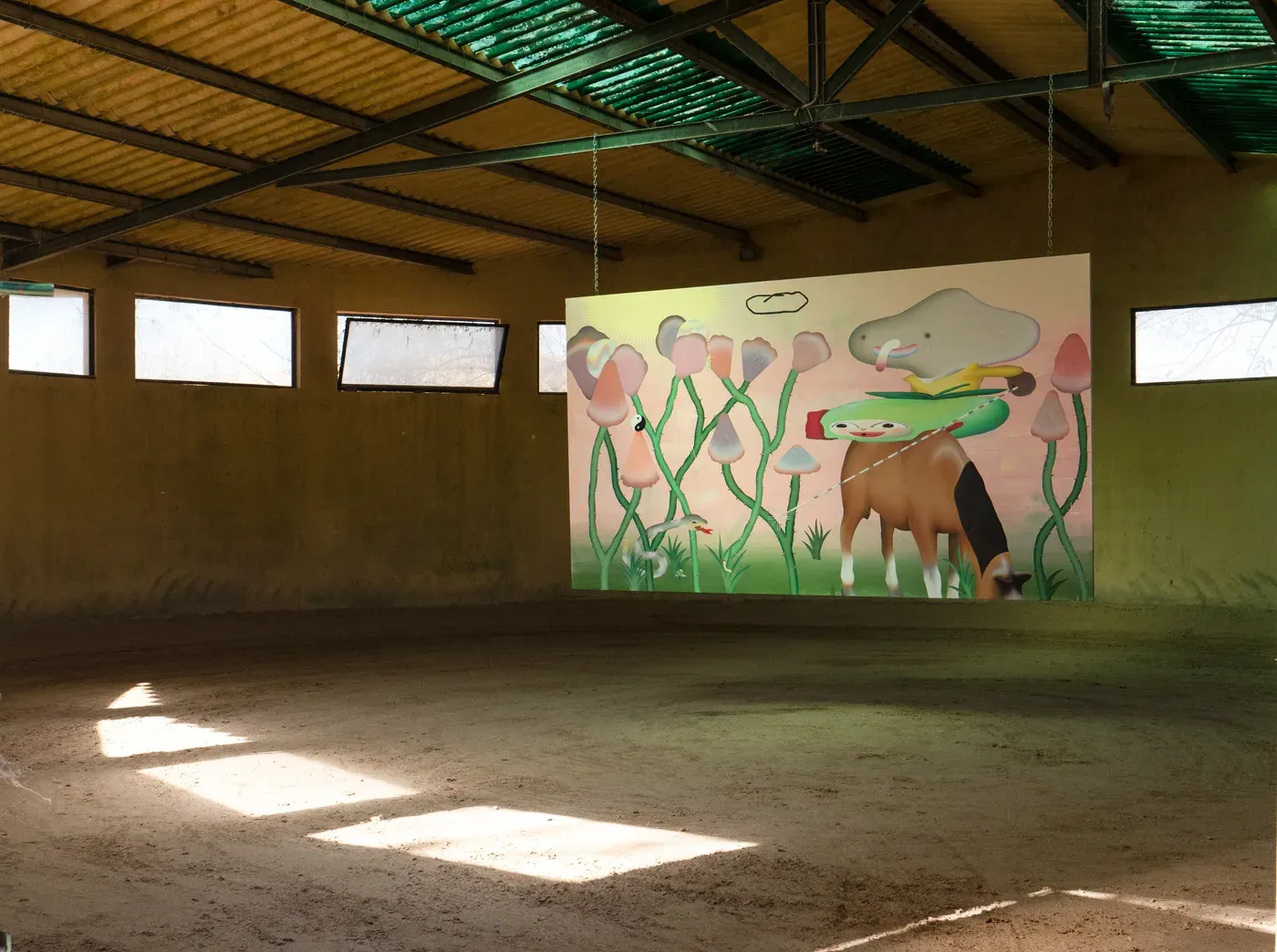
This strategy shows up everywhere in the work. In one sculpture, a pink spiky sphere sits on a mirrored platform, its soft aggression reflected infinitely below.
Another piece features a wooden cabinet on pink legs, its doors open to reveal three face-shaped voids staring back at the viewer.
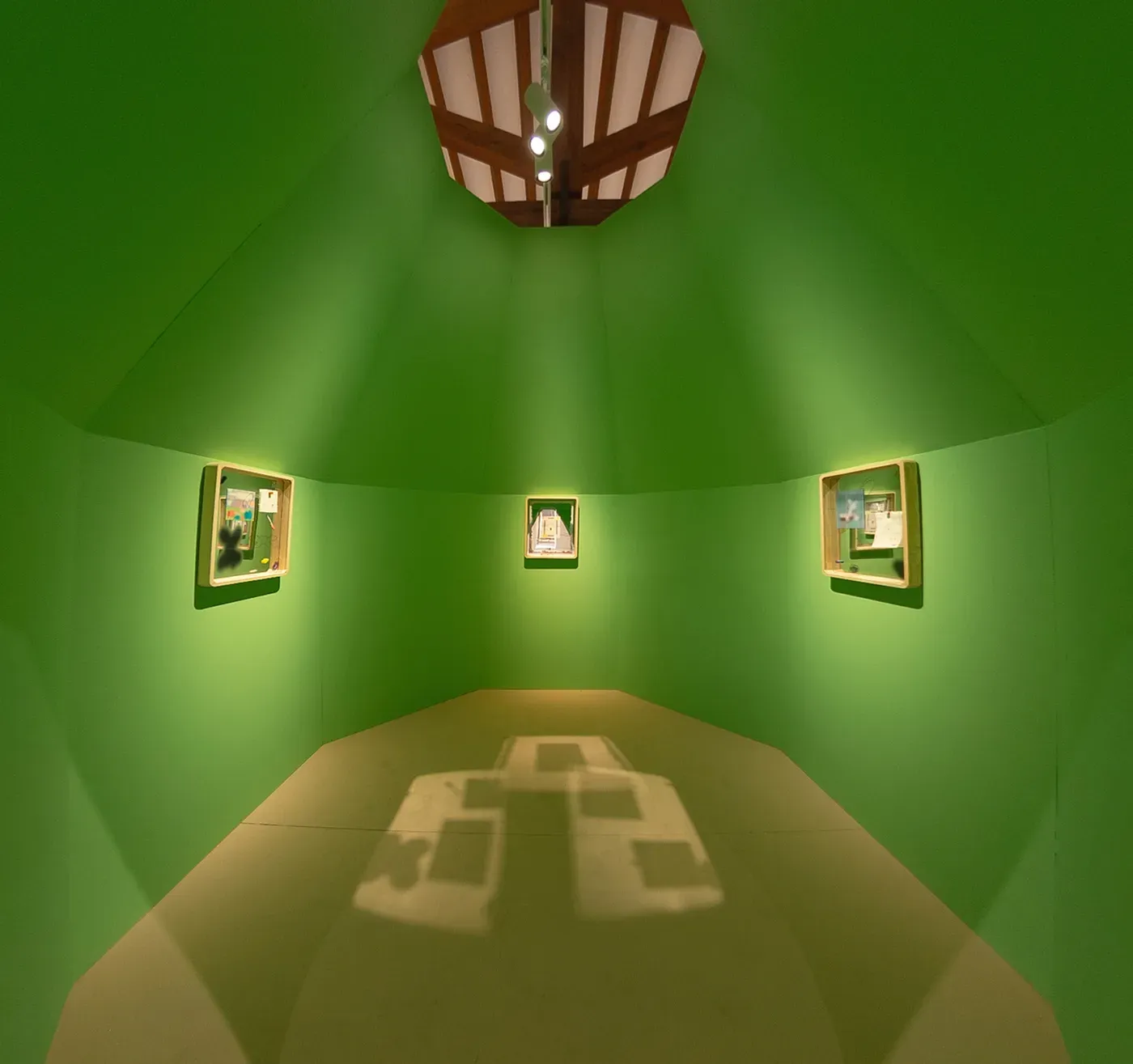
These aren't just objects. They're psychological architectures. Each work maps the same territory: the space between what we show and what we keep.
He is currently working on his third book with Stolen Books, preparing for his first solo exhibition in Mexico in 2026, and continues to develop his artistic and curatorial practice as a living, open, and ever-evolving process.
Grip Face presents new work in the upcoming show at Untitled Art Fair Miami with La Bibi Gallery and Reus Art Gallery.
The materials tell the story too. Grip Face works with pink fur, brown hair, glossy green resin, raw wood, pastel paint. Soft meets hard. Organic collides with synthetic.
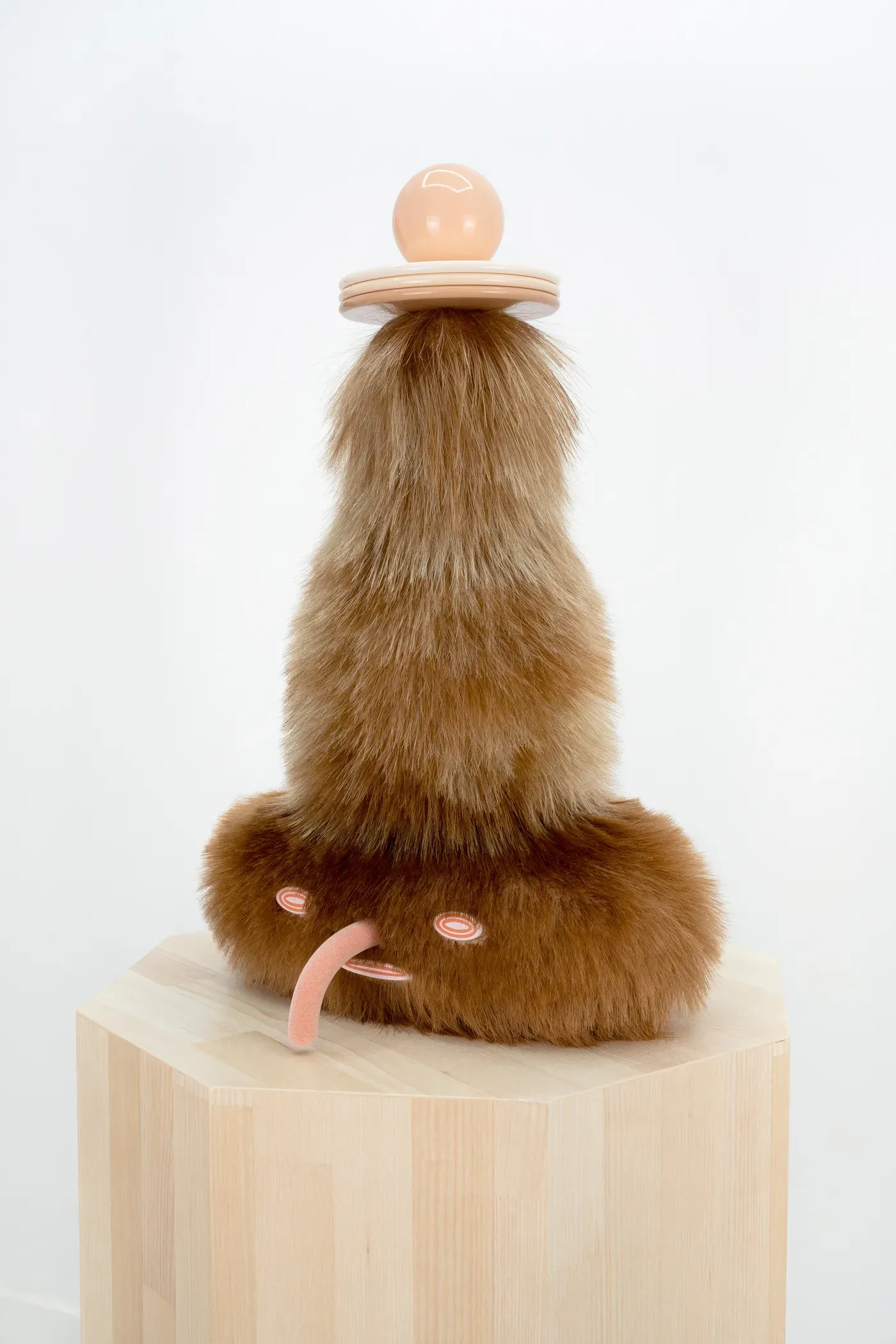
The tactile warmth of fur pressed against the cold smoothness of mirrored surfaces. These aren't aesthetic choices. They're material translations of living in a body while performing online. We're soft creatures navigating hard digital systems.
When the Mask Becomes Another Face
But there's a problem with protective personas, and Oliver's work knows it. Grip Face was supposed to create distance from exposure culture. Instead, it became another identity requiring maintenance.
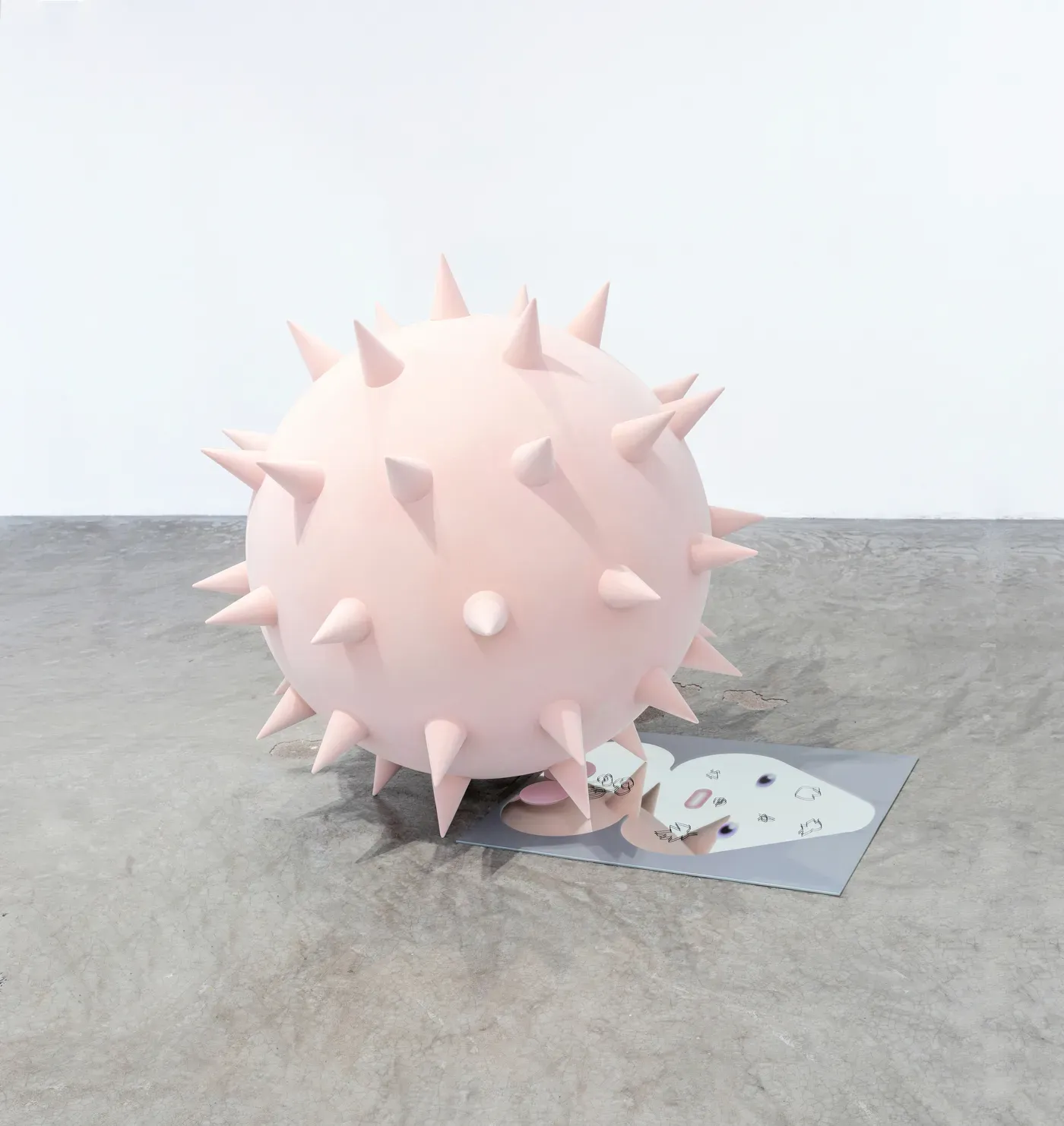
International exhibitions in Vienna, Seoul, Tokyo, Paris. Artist statements. Instagram presence. Press materials. The alter ego generates its own demands for visibility and performance.
You can see this tension playing out in the work's evolution. Early pieces feel more playful, almost toy-like in their soft materiality. Recent installations grow more complex, more architectural, more conscious of their own construction.


Grip Face: Side B of one of the paintings exhibited at the Zona Maco art fair in Mexico City and one of the series of postcards exhibited at the Parco Museum in Tokyo Image Courtesy of the Artist

A large-scale projection shows surreal creatures in a mushroom forest, the digital animation blown up to room-filling scale.
Another installation uses transparent panels and suspended objects to create a walk-through environment where viewers become part of the composition. These aren't hiding spaces anymore. They're stages.
The recurring motifs matter here. Mirrors appear constantly, forcing viewers to see themselves within the work. Hair and fur create uncanny moments of almost-recognition. Masks and disguises multiply.
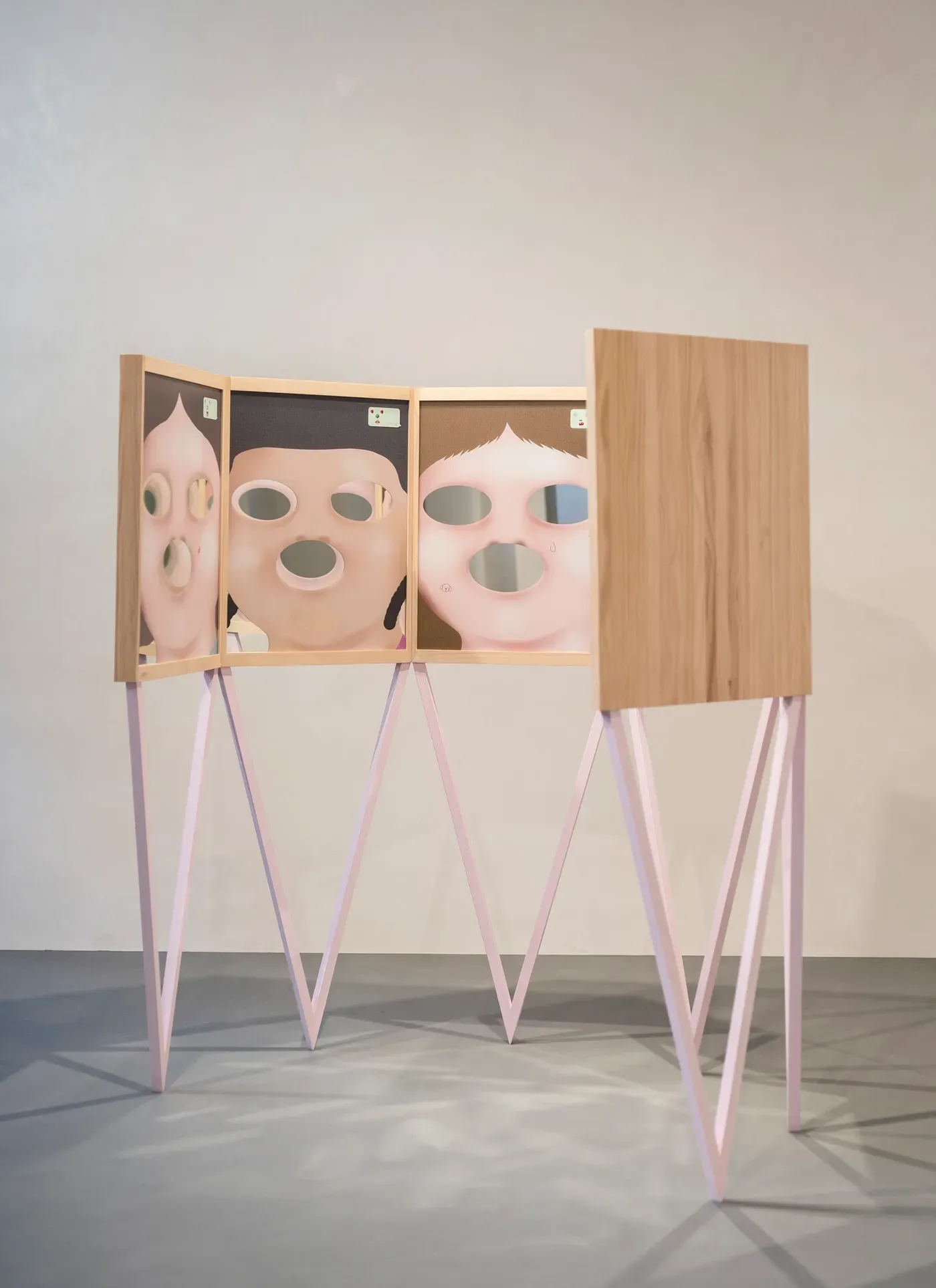
But instead of concealing, these elements expose the mechanics of concealment itself. Oliver isn't hiding behind Grip Face. He's making visible the psychological labor of maintaining any public identity in contemporary culture.
The Necessary Fiction
Maybe the real question isn't whether alter egos protect us, but whether we need to believe they do.

Grip Face operates as what Oliver might call a "symbolic universe," a way of mentally organizing the split between private experience and public presentation that social media collapsed.
The mask might be symbolic rather than literal protection, but symbols have real power.


A candy-colored nightmare by Grip Face at Miró Mallorca Foundation. Behind the playfulness of Utopía del Lodo, Sashimi de Bruma lies a sharp critique of fear, fragility, and the illusion of safety.
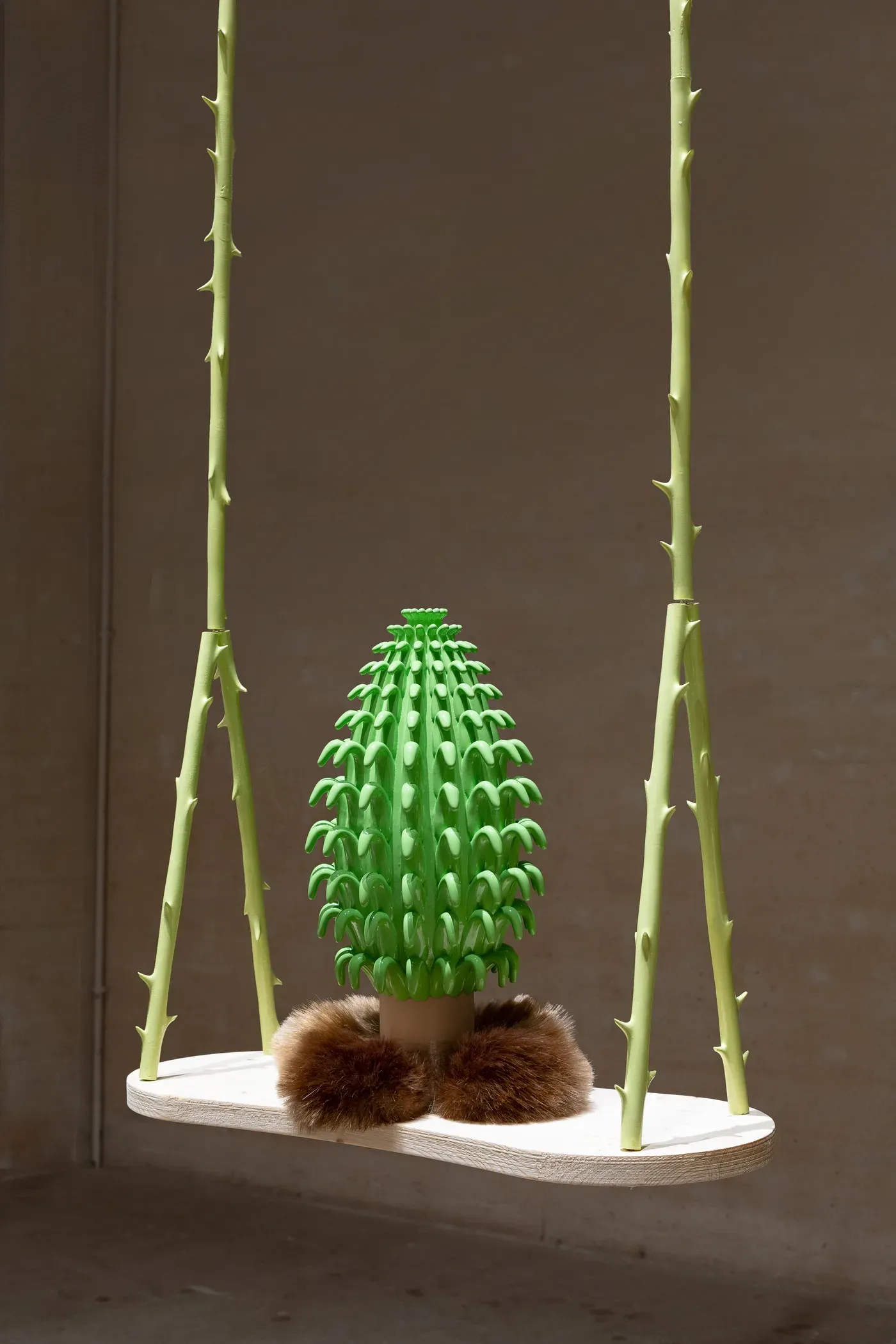
Consider how the work moves between scales and contexts. At Parco Museum Tokyo, the pieces adapt to one spatial logic.
At Fundació Miró Mallorca, they respond to completely different architectural and cultural conditions. This site-specificity isn't about fitting in.
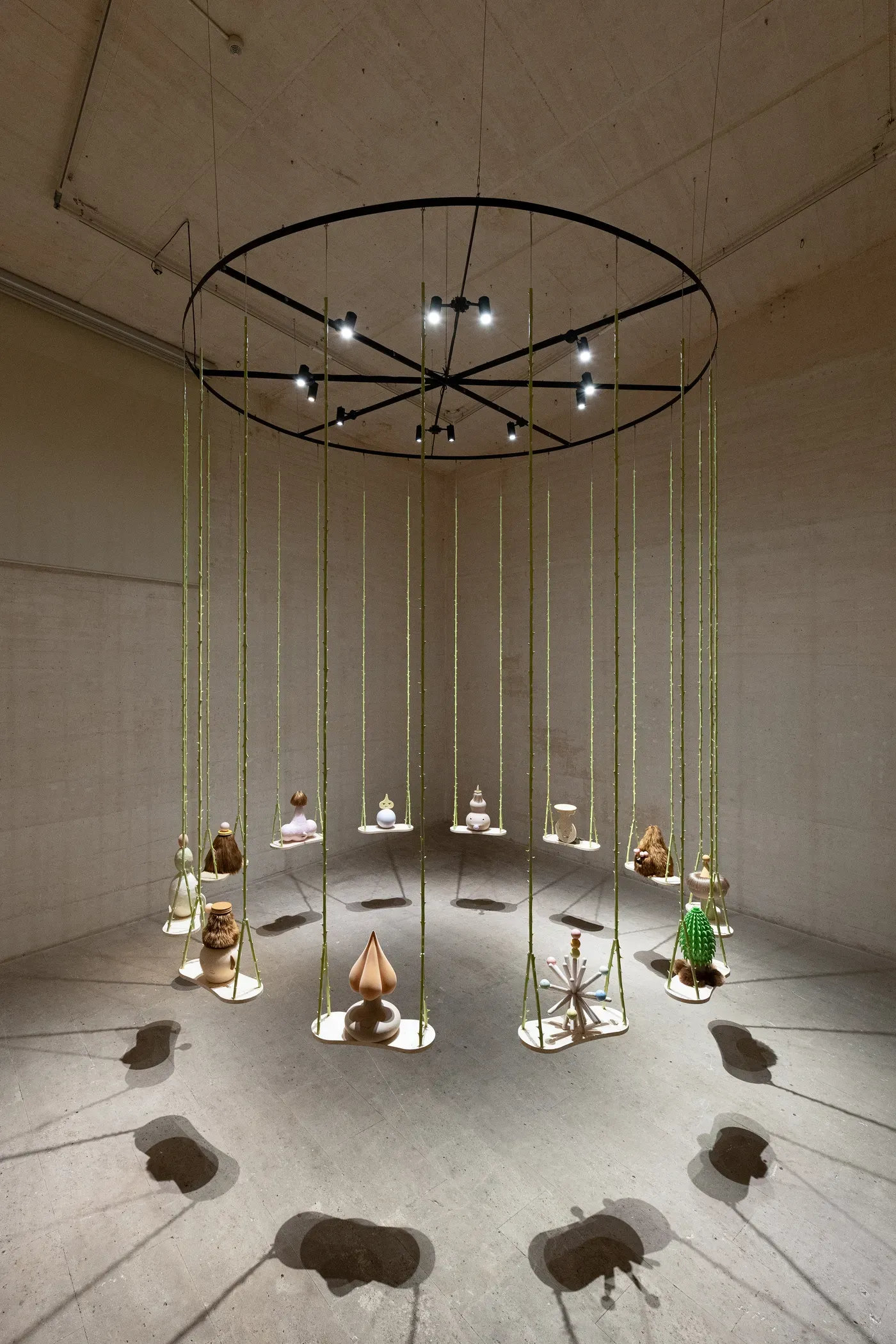
It's about maintaining conceptual coherence while acknowledging that identity always performs differently depending on where it appears.
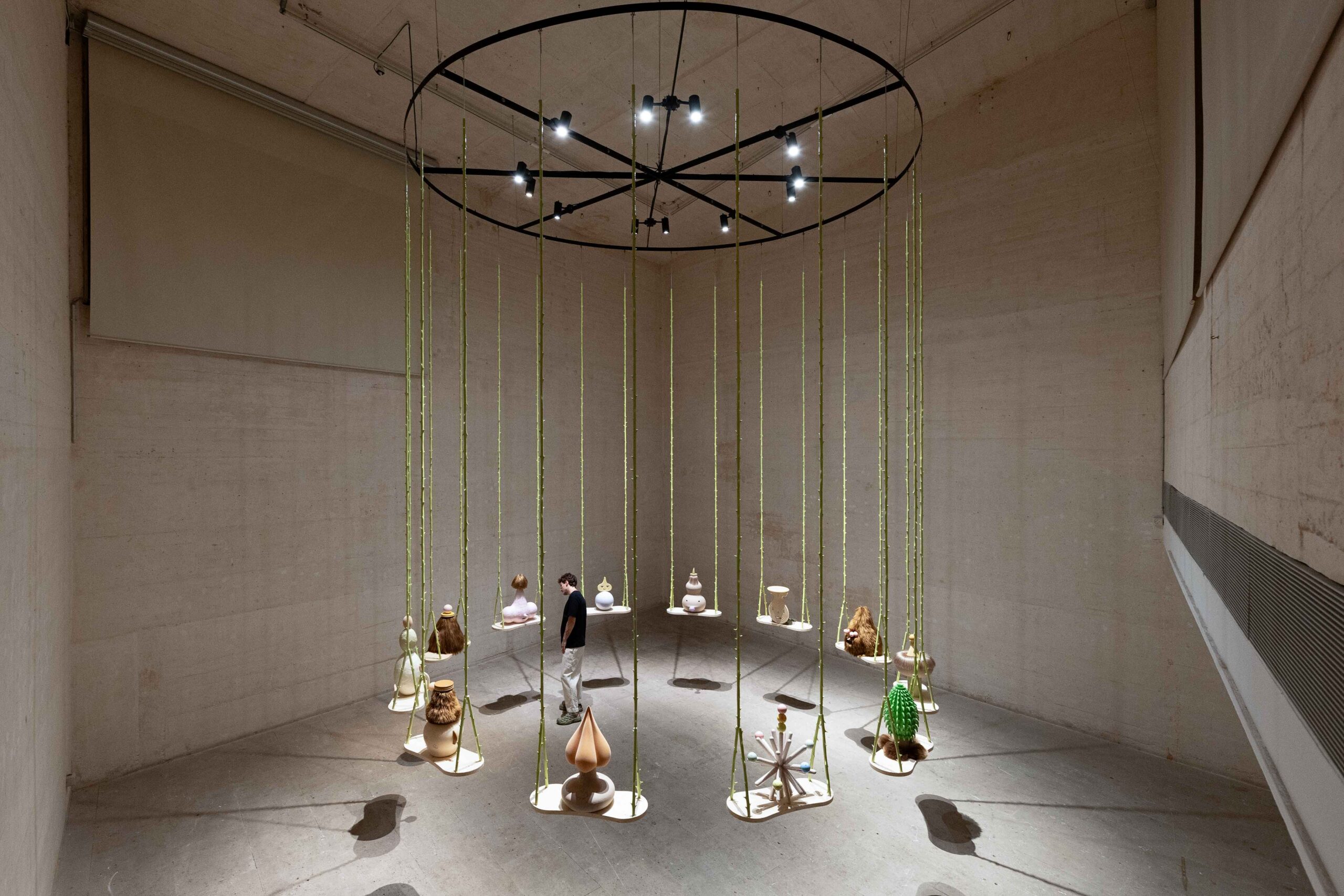
Grip Face, Utopía del Lodo, Sashimi de Bruma Miró Mallorca Foundation
Grip Face changes based on context while staying essentially itself. That's not failure. That's how identity actually works.
The alter ego gives Grip Face permission to be multiple things at once. He can make playful pink sculptures while addressing serious cultural anxiety. He can exhibit internationally while maintaining a coherent mythology.

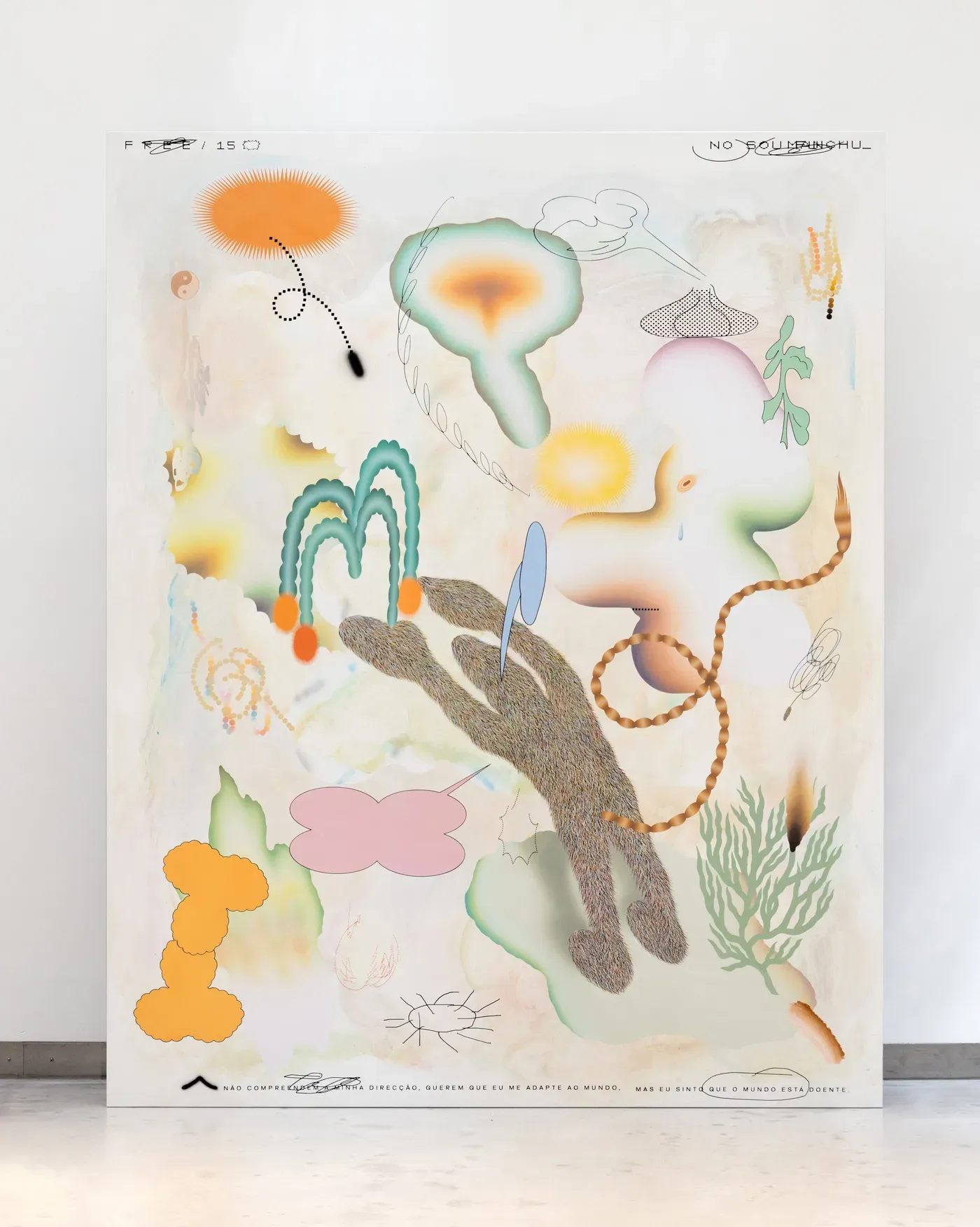
Grip Face, F/W (left), acrylic and oil on canvas, 68.5 × 60.5 cm, 2025. Presented at Estampa Contemporary Art Fair with Galerie MPA. Paraíso de azufre y distopía “das árvores de fruto” (right), acrylic and oil on canvas, 250 × 200 cm, 2025. Exhibited with Solo Contemporary. Image courtesy of the artist and galleries.
He can participate in visibility culture while keeping something essential in reserve. The mask doesn't eliminate the tension between these positions. It makes space for the tension to exist productively.
Where This Lands
Grip Face is preparing his first solo exhibition in Mexico for 2026 while working on his third book with Stolen Books.
Grip Face keeps expanding, keeps circulating, keeps demanding.
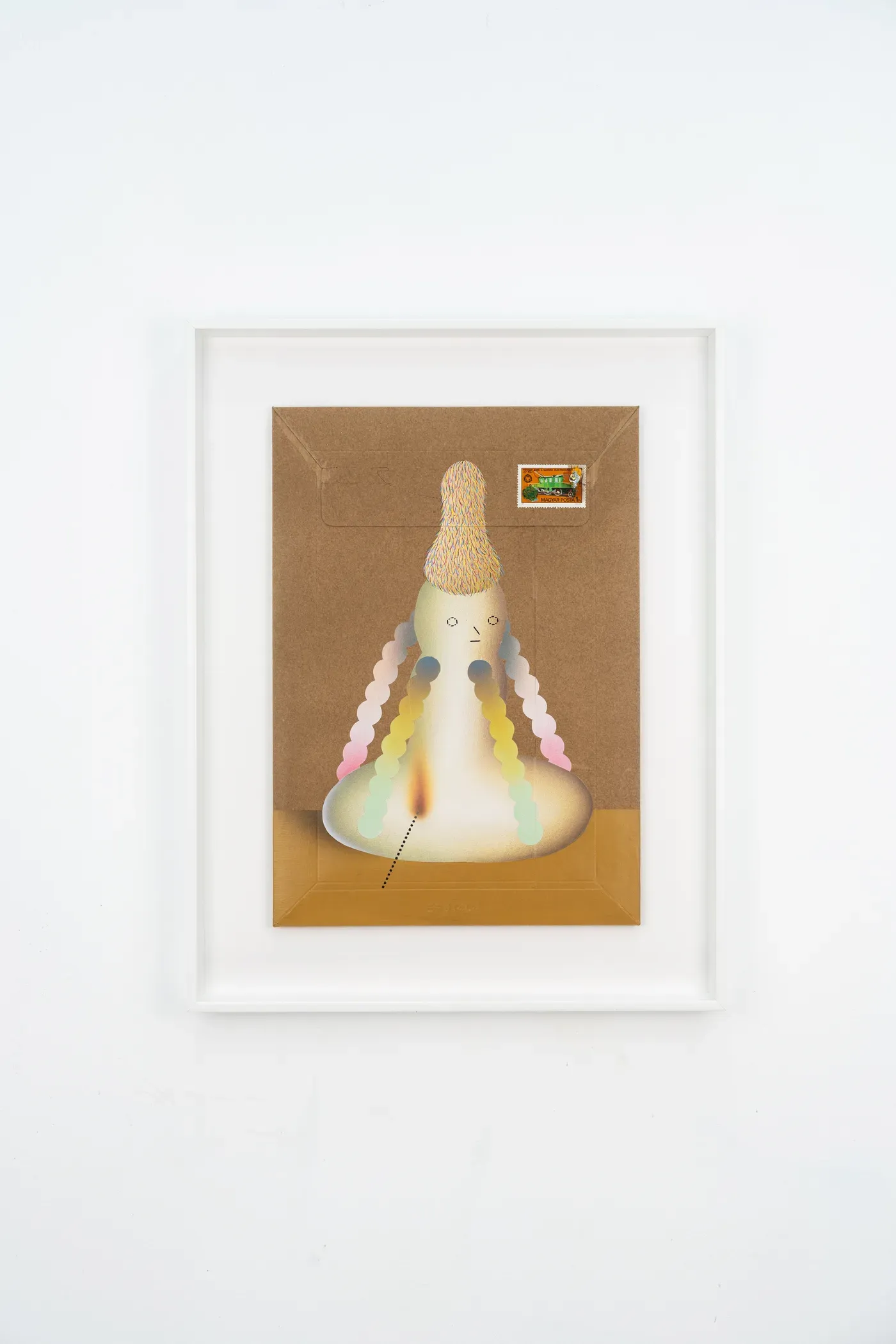
The alter ego that was supposed to create protection has become a full-time practice. But maybe that's the point.

Grip Face - La Bibi + Reus Gallery
Contemporary life doesn't offer clean exits from exposure culture. It offers strategies for navigating it with varying degrees of consciousness and control.
Grip Face represents a choice to engage deliberately rather than disappear entirely. The mask acknowledges that we can't escape performance, but we can choose how we perform.
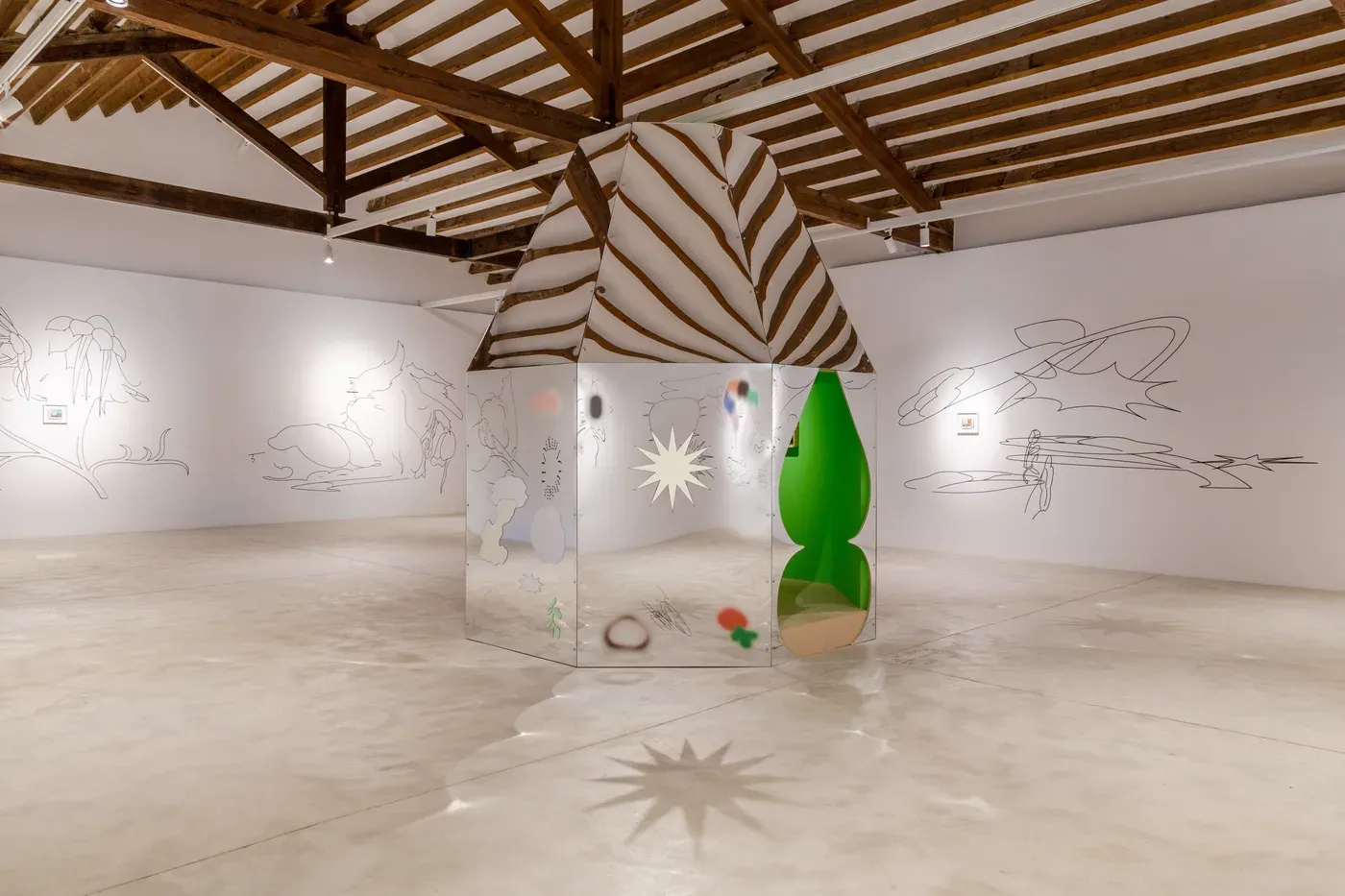

We can build symbolic systems that give us psychological room to operate. We can use soft materials to talk about hard realities.
We can create alter egos that protect something even as they expose something else. The work asks if that's enough. It doesn't answer.
The mask stays on, doing its ambiguous work, offering protection that might be real or might be theater. Either way, Grip Face keeps making, keeps showing, keeps the persona alive.
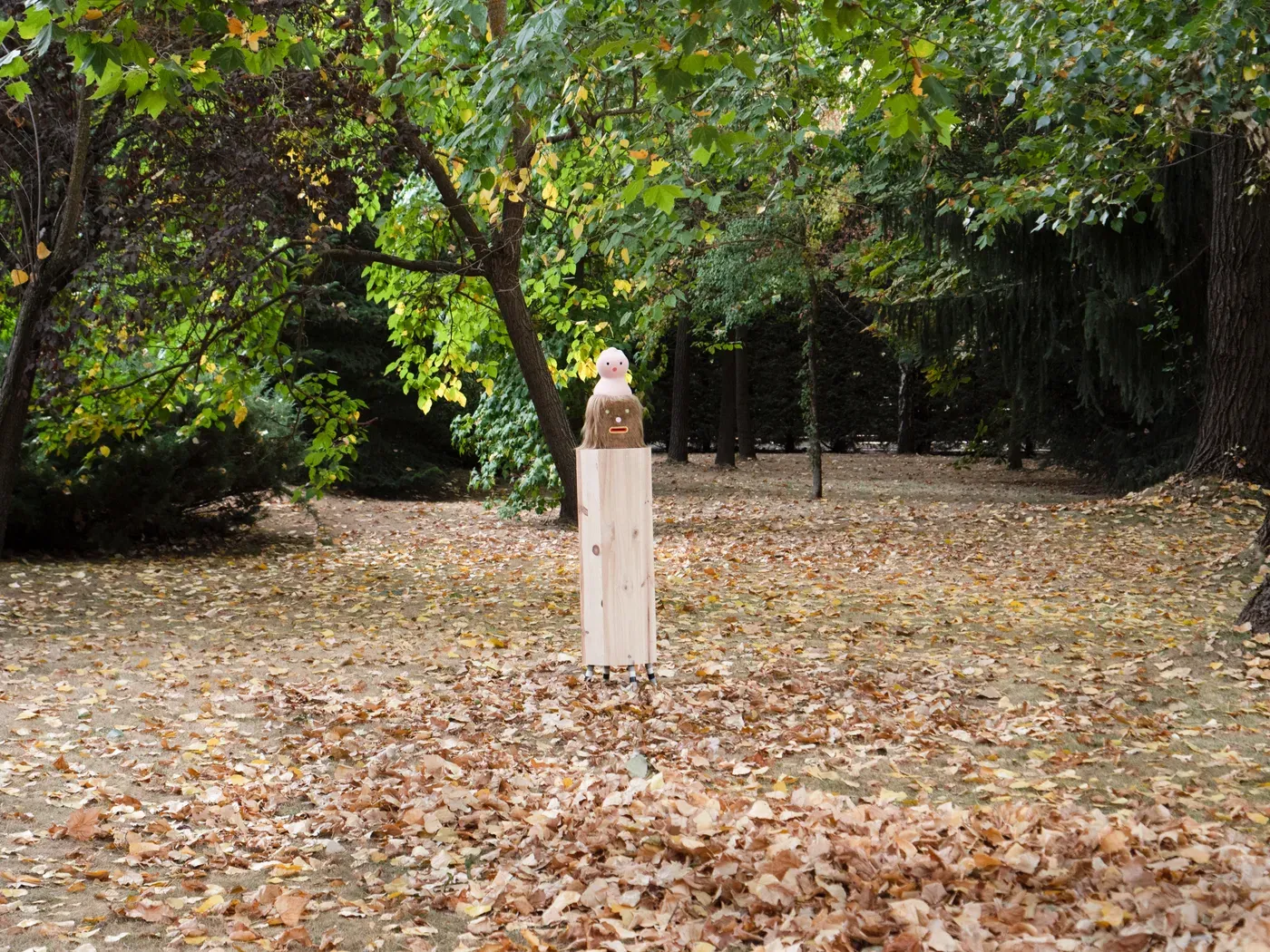
Because whether or not Grip Face actually shields the artist from overexposure, it gives him a language to talk about the problem.
And sometimes naming the trap is the first step toward understanding how to live inside it.
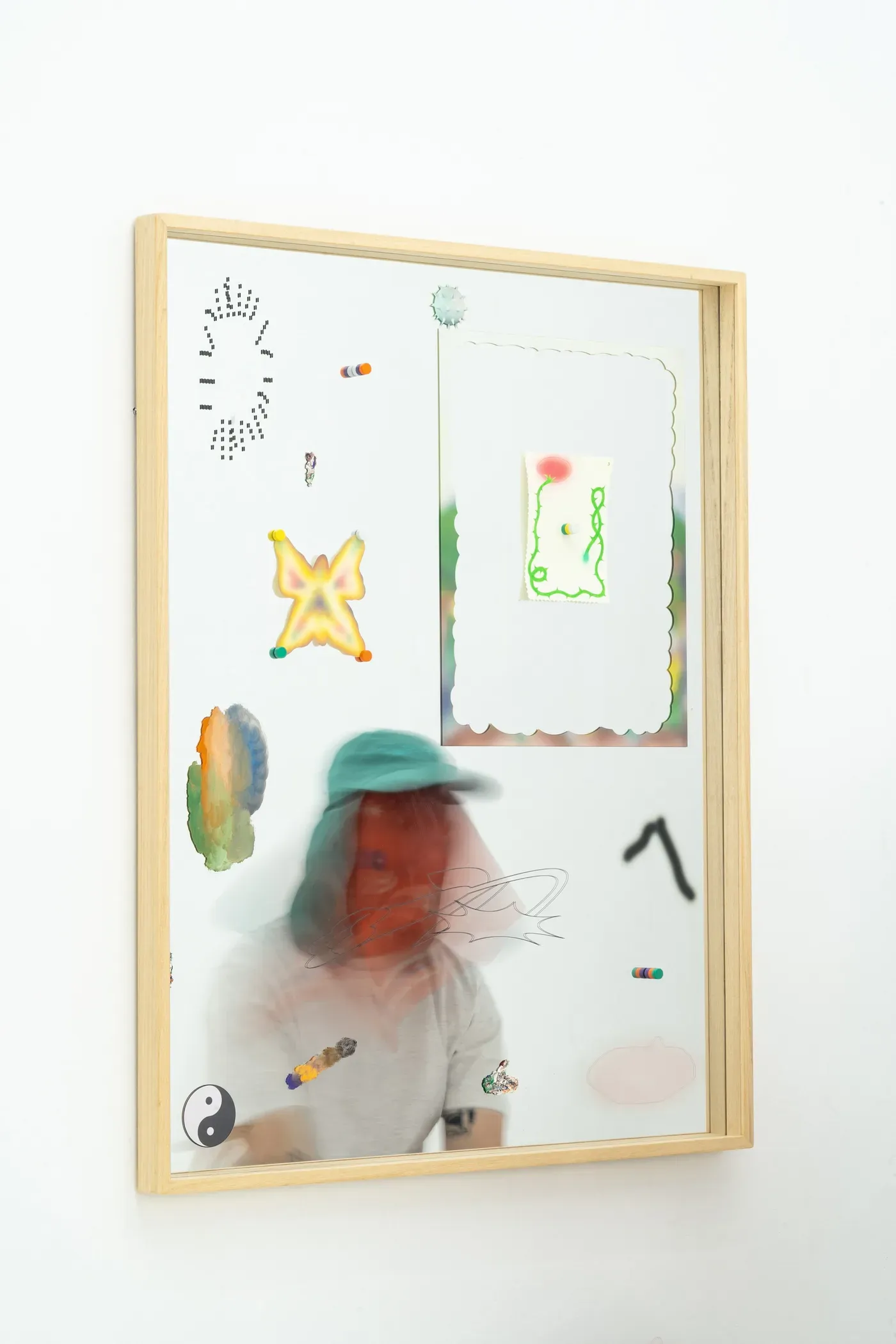
Follow Grip Face on Instagram and discover more works and projects on his highly recommented Website


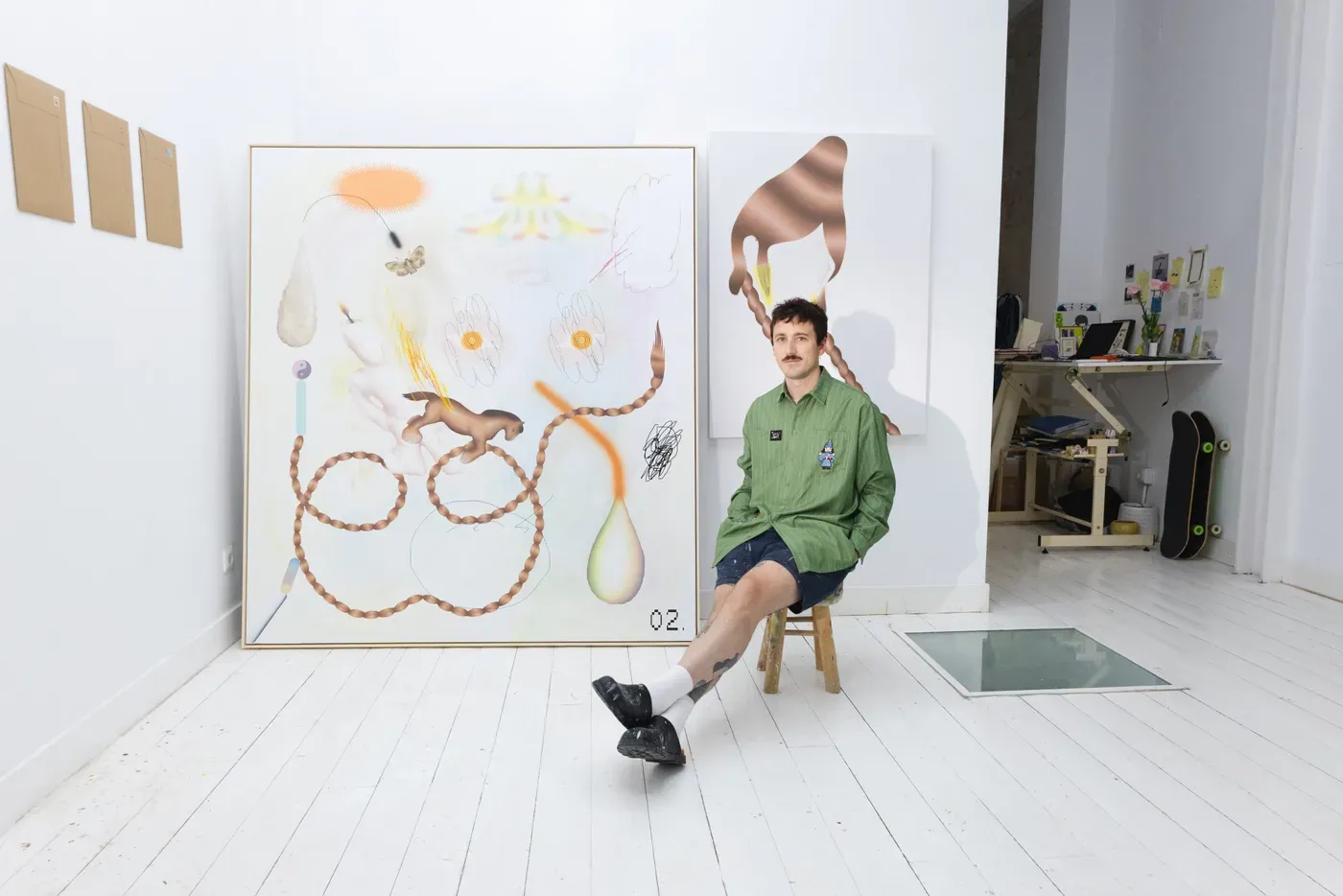

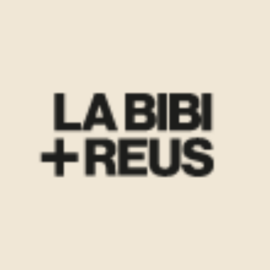

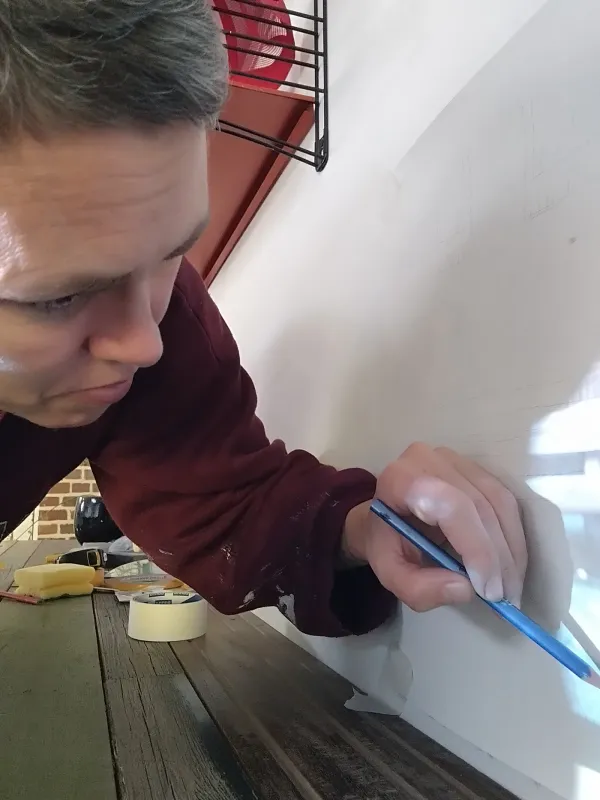



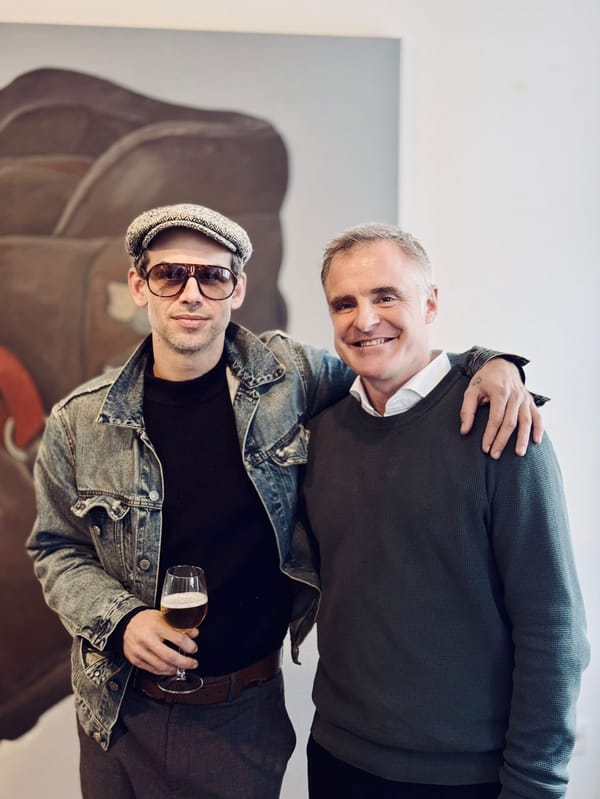

Member discussion